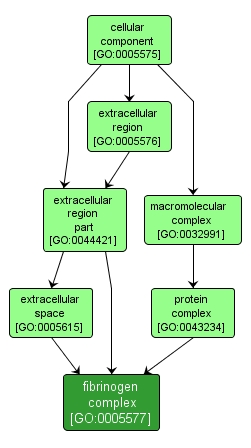| Desc: |
A highly soluble, elongated protein complex found in blood plasma and involved in clot formation. It is converted into fibrin monomer by the action of thrombin. In the mouse, fibrinogen is a hexamer, 46 nm long and 9 nm maximal diameter, containing two sets of nonidentical chains (alpha, beta, and gamma) linked together by disulfide bonds. |














